The Chinese Oppo Electronics Corporation was registered in 2004. Today, the company produces premium consumer electronics, as a division of BBK Electronics. Founded in 1995, BBK Electronics LTD is one of the largest manufacturers of consumer electronics in China. Moreover, BBK Electronics also owns Vivo Communication Technology Co. Ltd, Realme and OnePlus.
Today, the share of Oppo and Vivo companies reaches 9% and 8% of the global market. Thus, their total share reaches 17%. For comparison, the share of the leading Samsug is also 17%. According to the results of the third quarter of 2019, Oppo and Vivo were included in the list of the most profitable companies along with Samsung, Apple, Huawei and Xiaomi. Formally, they compete with each other. But in fact, companies are focused on different markets. In particular, Oppo is active in America, Europe and India, and Vivo mainly works in the Chinese market.
Introduction
As a technology company, Oppo actively uses innovative solutions. Find X recently beautifully illustrated this trend. As known, in 2017, Apple engineers were among the first to implement cutout in the iPhone X, trying to create a frameless smartphone. This solution successfully eliminated the problem of front-facing camera placement in a frameless design, freeing up space for additional pixels. Unfortunately, many experts criticized its aesthetics despite the real increase in the screen surface. As a result, in 2018, Oppo optimized this solution by proposing Find X with a retractable camera in the upper part of the case.
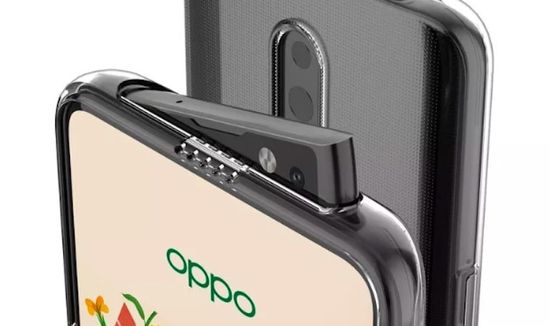
When starting the camera app, the hidden module automatically rises within 0.5 seconds. Moreover, it also contains a rear-facing camera. Perhaps in the future, this solution will be able to compete successfully with cutout design.
Today, Oppo produce phones in their A series, RENO series, Find series, F Series, N series and R series. However, the company does not very strictly follow its own classification. For example, according to many experts, F15 is a global version of the Oppo A91 introduced in December in China.

Oppo A5s
Series A includes mid-budget smartphones. In April 2019, Oppo launched the A5s.
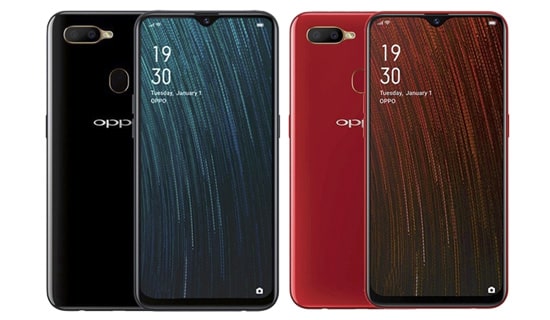
The model uses a 6.2-inch InCell IPS display (92% sRGB and 68% AdobeRGB) with 720 x1 520 resolution (271 ppi density), 8-core Helio P35 (4 x Cortex-A53, 2.3 GHz + 4 x Cortex-A53 , 1.8 GHz) chipset with PowerVR GE8320, RAM 2/3/4 GB and 32/64GB Storage. As known, in 2018 Xiaomi first installed Helio P35 on Mi Play. In fact, it replaced the not-so-popular Helio P30. According to the company, today it produces P35, P60, P70 and P90 using the 12nm FinFET (fin field-effect transistor) process technology from TSMC, which provides a significant reduction in energy consumption. In addition, the company offers CorePilot technology to optimize energy consumption. Additionally, the P35 supports AI functionality.
In addition, the smartphone has an 8MP front-facing camera with f/2.0, and double camera system (13MP + 2MP with f/2.2 and f/2.4).
Oppo A8 and Oppo A91
In December, in China, the company introduced two more models of this series, including the A91 and A8.
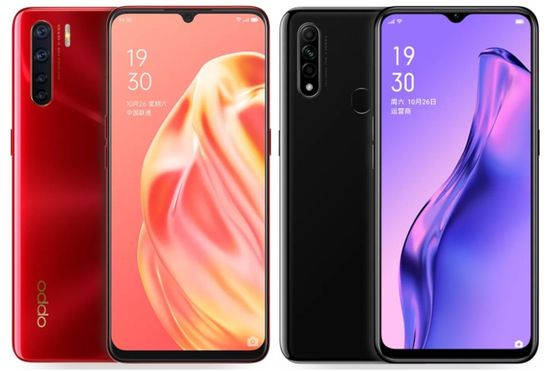
The Oppo A8 uses a 6.5-inch IPS display with 1600 x 720 resolution (270 ppi density), an octa-core MediaTek Helio P35, triple camera system (12 MP, f/1.8, wide, PDAF + 2 MP, f/2.4, 1/5″,1.75µm, macro camera + 2 MP, f/2.4, 1/5″, 1.75µm, depth sensor) and 8 MP, f/2.0 selfie camera, 4GB RAM, 128 GB storage, a fingerprint scanner and a 4230 mAh battery. In addition, it supports 2 SIM cards.
The Oppo A91 has a 6.4-inch AMOLED screen with 2400 x 1080 resolution (408 ppi density), 12nm 8-core Mediatek Helio P70 (ARM big.LITTLE architecture – 4 x Cortex A73, 2.1 GHz + 4 x Cortex A53 , 2.0 GHz) chipset with Mali-G72 MP4 GPU, four camera system (48 MP, f/1.8, 26mm, (wide) 1/2.0″, 0.8µm, PDAF + 8 MP, f/2.2, 13mm (ultrawide), 1/4.0 “, 1.12µm + 2 MP, f/2.4, 1/5″, 1.75µm (dedicated macro camera) + 2 MP, f/2.4, 1/5″, 1.75µm, depth sensor) and 16 MP, f/2.0, 26mm (wide), 1/3.1”, 1.0µm selfie camera, 8GB RAM, 128 GB storage, fingerprint (under display, optical), accelerometer, gyro, proximity, compass and Li-Po 4025 mAh battery.
The cost of A5s and A8 varies in the range of $ 150-170. The price of A91 reaches almost $ 300 in China.
F Series
The models in this series use the innovative AI SelfieTune integrated face recognition technology. The company first used it in an Oppo F5. Oppo F7 (Selfie Expert) uses the second generation of AI SelfieTune 2.0. In particular, it recognizes and optimizes 296 reference points on the face, which exceeds the first version by 20%.
In 2019, the company introduced the Oppo F11 and Oppo F11 Pro.
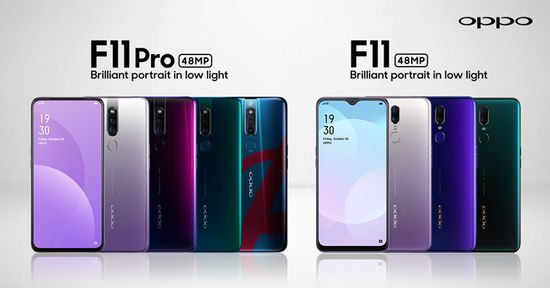
Both models work under Android 9.0 Pie. They use a 6.5-inch LTPS IPS LCD display with 2340 x 1080 resolution (397 ppi), an 8-core Mediatek Helio P70 and dual camera system (48MP + 5MP).
But the F11 Pro uses a motorized pop-up 16MP front camera that automatically rises above the panel.
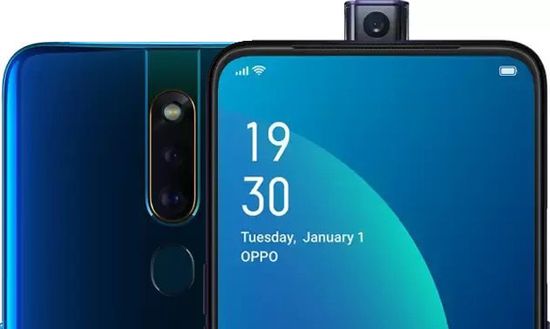
The F11 selfie camera does not have this feature.
Oppo K Series
In 2018 the company introduced the first Oppo K1 smartphone, and in 2019 – Oppo K3 and Oppo K5.
Both models support DC Dimming technology, which reduces the flickering the AMOLED displays due to low PWM. As known, DC Dimming eliminates flicker, reducing eye strain, but can distort color reproduction.
In fact, Oppo K3 is an improved version of last year’s K1.
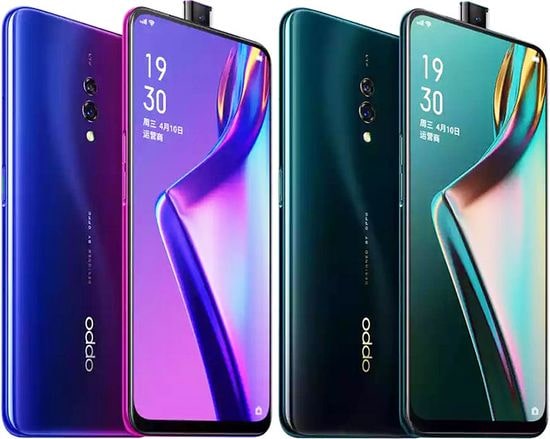
The model uses a 6.5-inch AMOLED display with 1080 x 2340 resolution (394 ppi density), 10nm Qualcomm Snapdragon 710 octa-core (2 x Kryo 360 Gold (Cortex-A75), 2.2 GHz + 6 x Kryo 360 Silver (Cortex-A55) , 1.7 GHz) with Adreno 616, 6GB RAM, 64GB storage, 16MP f/1.7 + 2MP f/2.4 (dual main camera) and built-in 16MP retractable selfie camera with f/2.0, 3765 mAh battery, has a fingerprint scanner, supports 2 SIM cards, SlowMotion and VOOC 3.0 flash charge.
High performance, efficient throttling (algorithm to protect the processor from overheating by skipping work cycles), high battery life, DC Dimming and wide color coverage are pros of this model. Unfortunately, the model does not have an NFC module (Near field communication) and a microSD slot. Model costs $ 350-400. The Oppo K5 targets the Indian market and costs about $ 100 less.
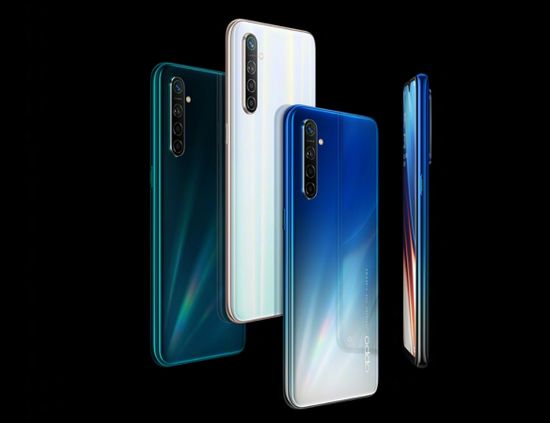
The model uses a 6.4-inch AMOLED display with 1080 x 2340 resolution (402 ppi density), the newer 7nm 8-core Qualcomm Snapdragon 730G (2 x Kryo 470 Gold (Cortex-A76), 2.2 GHz + 6 x Kryo 470 Silver (Cortex- A55), 1.8 GHz) with Adreno 618, 6GB RAM, 128GB storage, four camera system (64MP + 8MP + 2MP + 2MP) with autofocus and OIS, 32MP selfie camera, Li-Po 4000 mAh battery. Of course, it has a set of traditional sensors.
Oppo Reno
The company is positioning Oppo Reno as a sub-brand, with high hopes for it. Oppo Reno and Reno 10x Zoom were the first models of the new series.
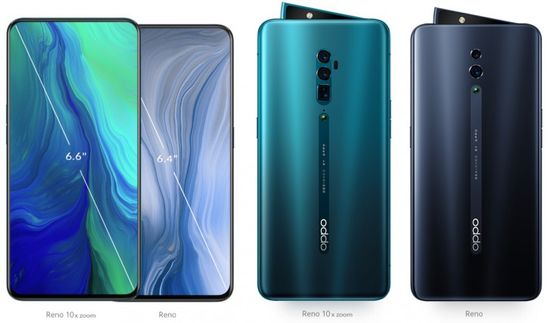
In terms of price and specs, the Reno 10x Zoom competes with the Huawei P30 Pro.
Smartphones work under Android 9 Pie with ColorOS 6 interface. Like K3, Oppo Reno uses a 10nm 8-core Qualcomm Snapdragon 710 (2 x Kryo 360 Gold (Cortex-A75), 2.2 GHz + 6 x Kryo 360 Silver (Cortex-A55), 1.7 GHz) with Adreno 616. But Reno 10x Zoom has a more powerful 7nm 8-core Qualcomm Snapdragon 550 (1x Kryo 485, 2.84 GHz + 3 x Kryo 485, 2.42 GHz + 4 x Kryo 485, 1.78 GHz).
Oppo Reno uses a dual camera system (Sony IMX586 48MP sensor with f/1.7 and OIS, and an 8MP sensor with f/2.2) and a built-in 16MP retractable selfie camera without flash. This design many often call shark fin.
But Reno 10 x Zoom has an additional periscope telephoto lens with a 10x hybrid zoom. Moreover, its resolution reaches 13 MP vs 8 MP in the Huawei P30 Pro.
Oppo Reno uses a 6.4-inch FullHD+ AMOLED display with 2340 x 1080 resolution (402 ppi), with Corning Gorilla Glass 6 and support for DCI-P3 standard. In general, the list of its pros includes a design with shark fin, a good display, fast VOOC 3.0 charging and a fairly high shooting quality.
The Reno 10x Zoom has a 6.6-inch display (387 ppi density) with similar specifications. Today, its price varies in the range of $ 600-700 (6GB RAM, 128GB storage / 8GB RAM, 256GB storage). Of course, 6.6-inch display and an excellent telephoto lens with a 10x hybrid zoom are its main pros.
Oppo Reno2, Reno2 F и Reno2 Z
Of course, they all have pop-up selfie cameras to provide edge-to-edge displays.

All models use almost identical frameless AMOLED capacitive touchscreens which is protected by Gorilla Glass 6 technology. Reno 2 and Reno 2 F have 6.5-inch screens with 1080 x 2400 (401 ppi) and 1080 x 2340 (394 ppi) resolutions, respectively, and Reno 2 Z have a 6.53-inch screen with 1080 x 2340 resolution (395 ppi).
All phones use the traditional four camera system.
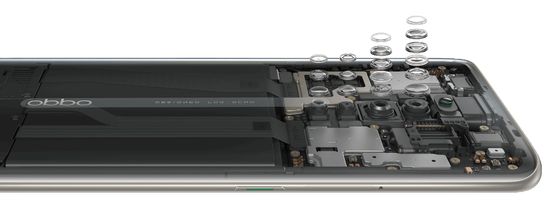
But their systems differ slightly in modules. For example, Reno2 received a 13MP telephoto lens.
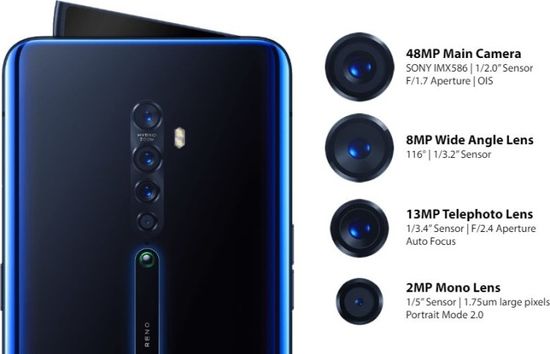
The Reno2 F and Reno2 Z cameras are almost identical.
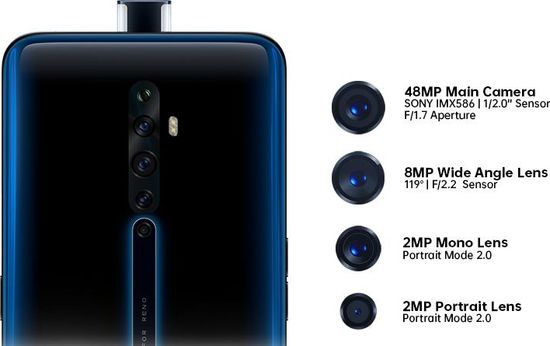
But models have different chipsets. In particular, Reno2 uses an 8nm Qualcomm Snapdragon 730G (2 x Kryo 470 Gold, 2.2 GHz + 6 x Kryo 470 Silver, 1.8 GHz) with an Adreno 618 GPU, Oppo Reno2 F – 12nm Mediatek Helio P70 (4 x Cortex-A73, 2.1 GHz + 4 x Cortex-A53, 2.0 GHz) with Mali-G72 MP3, Reno2 Z – 12nm Mediatek Helio P90 (2 x Cortex-A75, 2.2 GHz + 6 x Cortex-A55, 2.0 GHz) with PowerVR GM9446. Of course, Qualcomm Snapdragon 730G performance is higher compared to Mediatek, but Helio P70 and P90 are also very powerful chipsets. All models have 8 GB of RAM, VOOC Flash Charge 3.0 function and 4000 mAh Li-Po battery.
PROS
– good 6.5-inch screen with Gorilla Glass 6;
– 8GB RAM;
– 13MP telefoto lens and Qualcomm Snapdragon 730G in Reno2;
– shark fin;
– Dolby Atmos sound.
Cons
– no NFC module in Reno2 F and Reno2 Z;
– no wireless charging.
Oppo Reno Ace
In October 2019, Oppo released inexpensive flagship Reno Ace.
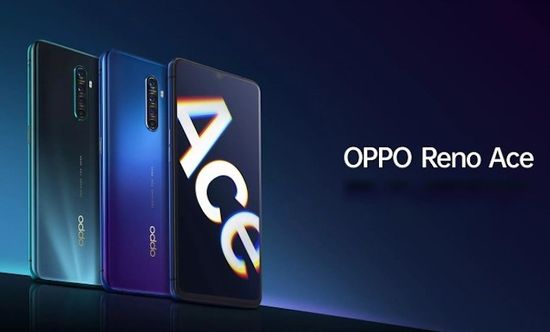
The novelty supports SuperVOOC Fast Charge 2.0 technology of high-speed charging power of 65 watts, which provides charging 4000 mAh battery in only 30 minutes. In addition, the model uses the latest Qualcomm Snapdragon 855 Plus. This SoC integrates a fast ‘Prime Core’ that clocks up to 2.96 GHz (up from 2.84 GHz in the 855), three further fast ARM Cortex-A76 performance cores, which can reach up to 2.42 GHz, four power-saving ARM Cortex- A55 cores that clock up to a maximum of 1.8 GHz, and Adreno 640 GPU. Of course, today 855 Plus is the most powerful chipset in this segment. Moreover, the Adreno 640 delivers a 15% increase in productivity.
In addition, the model uses a 6.5-inch AMOLED display with 1080 x 2400 resolution (405 ppi density), 8GB RAM, 256GB storage, four camera system (48MP + 13MP + 8MP + 2MP) with autofocus and OIS and 16MP selfie camera.
Of course, the model has a full range of traditional sensors and options, including ColorOS, dual SIM support and fast charging.
Its estimated price varies around $ 450. Considering the 6.5-inch AMOLED screen, a camera with 48MP Sony IMX586 sensor, Snapdragon 855 Plus and SuperVOOC Fast Charge 2.0, the model claims to be BestSeller in the segment of inexpensive flagships.
Oppo Reno 3 and Reno 3 Pro
In 2020, Oppo released Reno 3 with MediaTek 5G SoC and Reno 3 Pro with the latest Qualcomm Snapdragon 765G & 5G Connectivity.
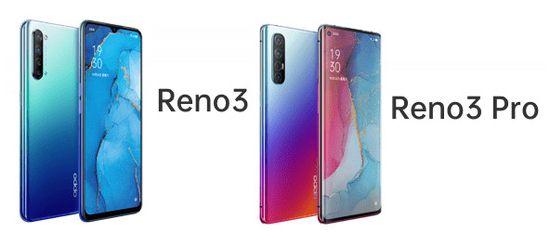
Both models work under running under Android 10 + ColorOS 7.
OPPO Reno3 Pro 5G uses a 6.5-inch Full HD+ AMOLED screen with 2400 x 1080 resolution (402 ppi density) with support for 90 Hz refresh rate and 97% coverage of NTSC standard, four camera system (48MP Sony IMX586, f/1.7 + 8MP f/2.2, 116 ° + 13MP f/2.4 + 2MP f/2.4) and 32MP (f/2.4) selfie camera, RAM 8/12GB and 128/256 storage. Given its cost of up to $ 500, the model has excellent chances of success.
Conclusion
Innovative focus, including shark fin and SuperVOOC Fast Charge 2.0, high-level components and affordable prices provide good prospects for Oppo phones. Today many consumers make a choice in favor of this brand when buying a smartphone. In addition, the company can gain a foothold in the segment of inexpensive flagships with the help of its very promising Oppo Reno series.
The video offers the announcement of the new Oppo F15 Pro.
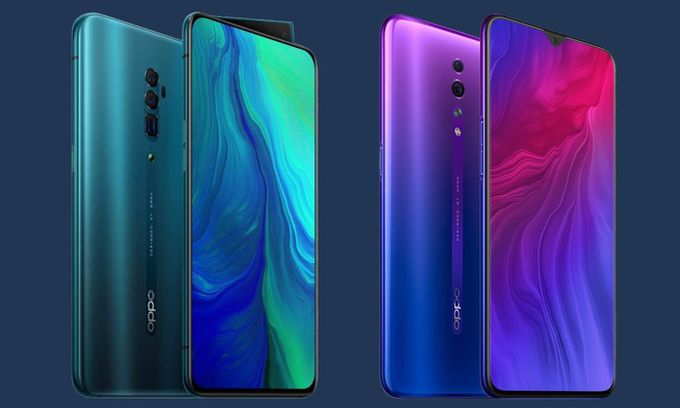
Pingback: OnePlus phones Review - The Appliances Reviews